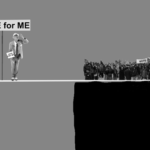WILMINGTON, N.C. (BNG)—Coloring as a spiritual practice has made the news recently.
That’s “coloring” as in coloring books, crayons, colored pens and pencils. Ditto for drawing, sketching and doodling as religious activities.
 A mandala designed by Karl Jung and reproduced by Blake Burleson, senior lecturer in religion at Baylor University, who often uses a mandala for contemplative practice in his Sunday School class.In fact, one person told Religion News Service she traded in church attendance for coloring. Apparently, the practice of intentional, prayerful coloring produces enough spiritual insight and experience to render churchgoing unnecessary for some people.
A mandala designed by Karl Jung and reproduced by Blake Burleson, senior lecturer in religion at Baylor University, who often uses a mandala for contemplative practice in his Sunday School class.In fact, one person told Religion News Service she traded in church attendance for coloring. Apparently, the practice of intentional, prayerful coloring produces enough spiritual insight and experience to render churchgoing unnecessary for some people.
But can coloring really be a spiritual act?
Some spiritual formation ministers and a university scholar said such practices can be spiritual—and not new in the history of Christianity. What’s more, they’re not even too far out for some Baptists.
“There’s been a lot written about art as prayer—the visual arts as a means of prayer,” said Jayne Davis, minister of spiritual formation at First Baptist Church in Wilmington, N.C.
She compared the practice to a prayer labyrinth—a circular maze walked or traced by finger, Davis said. For some people, all of these actions “quiet the body and the spirit, too,” she said.
 Jayne DavisDavis had her own experience of how coloring can be beneficial spiritually.
Jayne DavisDavis had her own experience of how coloring can be beneficial spiritually.
In 2012, she was in an ambulance on the way to the hospital with chest pains. Tests found her problem was “classic stress.”
Sign up for our weekly edition and get all our headlines in your inbox on Thursdays
She arrived back home to find a coloring book and crayons on a table.
“Just the sight of the coloring book and crayon filled me with peace,” she said.
Davis can’t say if the symbol of childhood relaxed her or if something emotionally healing was involved.
“But there was something about coloring that is at minimum therapeutic,” she said.
The kinds of books available to practitioners range from adult coloring books to relieve stress to those containing specifically religious themes. Amazon shows such books at No. 4, No. 14 and No. 15 on its bestseller list.
Davis said she wouldn’t encourage Christians to pick up the books with themes from Eastern religions. And she definitely wouldn’t advise anyone to choose coloring or drawing over corporate worship.
A ‘deep way of praying’
“But I do think there are a lot of ways that it could be a very healthy and deep way of praying,” she said.
Christians puzzled by how drawing or coloring can be prayerful exercises need go no further than ancient—and somewhat more familiar—contemplative practices, said Michael Sciretti Jr., minister of spiritual formation at Freemason Street Baptist Church in Norfolk, Va.
 Michael Sciretti Jr.Certainly the prayer labyrinth would be such an example. Participants prayerfully and slowly walk a circular, maze-like path that symbolically brings them closer to God.
Michael Sciretti Jr.Certainly the prayer labyrinth would be such an example. Participants prayerfully and slowly walk a circular, maze-like path that symbolically brings them closer to God.
Lectio divina is another Christian practice in which participants slowly and reflectively read short passages of Scripture, Sciretti said.
And Christians who use journaling as a way to focus their thoughts and prayers to discern God’s will in their lives also can identify with how coloring and doodling can do the same, he said.
Sybil MacBeth captured the idea in her 2007 book, Praying in Color. It guides readers through how to doodle and color while praying for the sick, loved ones or whatever is on their minds.
All of these practices can induce relaxation, reduce stress and promote spiritual awareness. That’s why the coloring books are such big sellers, Sciretti said.
“Clearly, people out in the world are longing for something real, an encounter with the divine, the great mystery,” he said. “And there are a lot who do not experience that on Sunday mornings.”
Can deepen church life
But these practices, ancient or recent, never should be used to replace church life and corporate worship, but instead to deepen them, he said.
Churches bear the responsibility to provide people with the spectrum of spiritual practices Christianity has to offer, Sciretti said.
Those practices can range from coloring to crafts and beyond.
“Churches should be centers for experiencing the divine,” he said.
 Blake BurlesonPraying while coloring can provide those experiences because it puts the rational mind on hold while elevating the role of the heart in prayer, said Blake Burleson, senior lecturer in religion at Baylor University and co-editor with Sciretti of the 2012 book Entemplating: Baptist Wisdom for Contemplative Prayer.
Blake BurlesonPraying while coloring can provide those experiences because it puts the rational mind on hold while elevating the role of the heart in prayer, said Blake Burleson, senior lecturer in religion at Baylor University and co-editor with Sciretti of the 2012 book Entemplating: Baptist Wisdom for Contemplative Prayer.
The same is true for other forms of spiritual practice, he said.
“The takeaway is that when we use our imaginations, we move sort of beyond our rational thinking mode into the heart mode,” Burleson said. “Whether it is writing poetry or painting or sculpting or whatever, we sort of drop down a bit. To me, that’s a contemplative practice.”
That heart mode can be achieved also through corporate worship, especially in making and experiencing music, he said.
It also can be achieved by reflecting on a stained-glass window depicting, say, the Trinity—itself created through a contemplative practice.
“Every religion uses art to express itself—whether it’s an icon, a mandala, calligraphy or a cave painting,” Burleson said.
Still, there is great resistance to such practices in many traditions, he added. Judaism, Islam and much of Protestant Christianity have viewed such expressions either with hostility or suspicion.
The ear versus the eye
“In Protestantism, we trust the ear. We want to hear the word from the pulpit,” he said. “But for Catholics and the Orthodox, the eye is very important. Colors and shapes get them into the imaginal world.”
Burleson teaches a Sunday school class where using varying forms of contemplative practice is common.
“I’ll bring in a mandala (an intricate geometric pattern) or something that I have created,” he said. “We will read Scripture, and I’ll ask them to color the mandala.”
It provides a different way of experiencing the Bible.
“It’s a way to refocus our attention on Scripture and takes our head and puts it in a more imaginal framework,” he said.
Burleson recommends such practices as a way for churches to keep members—especially young adults—engaged in church life.
“In our spiritual lives we can get bored with certain forms, so using a different part of our brain to access Scripture—it may just enliven us up a bit,” Burleson said.














We seek to connect God’s story and God’s people around the world. To learn more about God’s story, click here.
Send comments and feedback to Eric Black, our editor. For comments to be published, please specify “letter to the editor.” Maximum length for publication is 300 words.